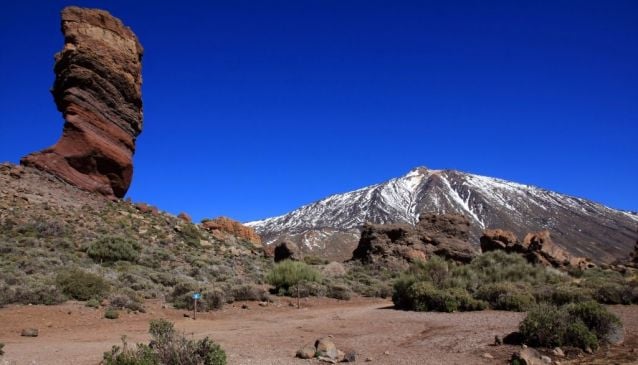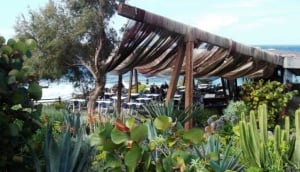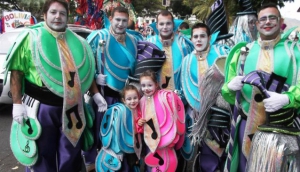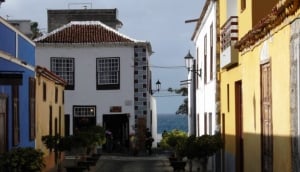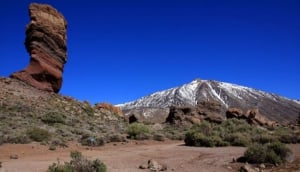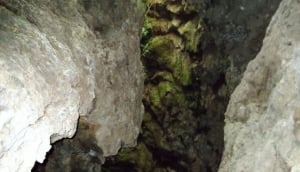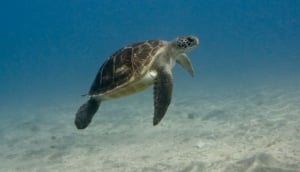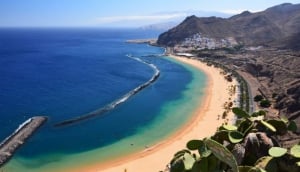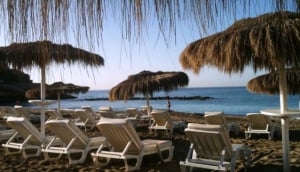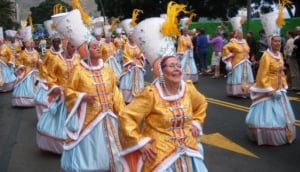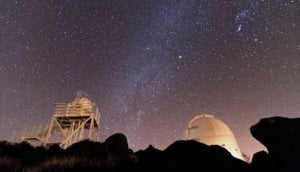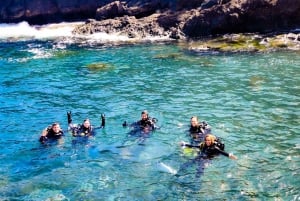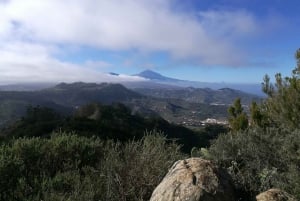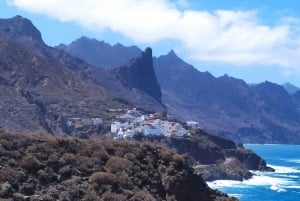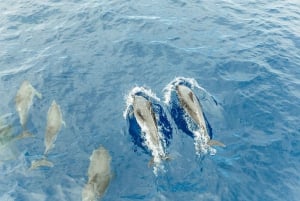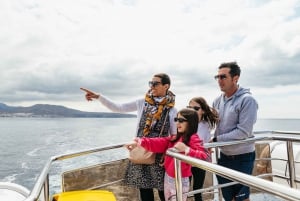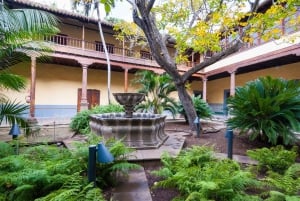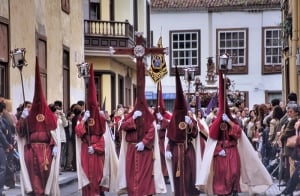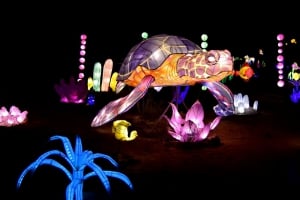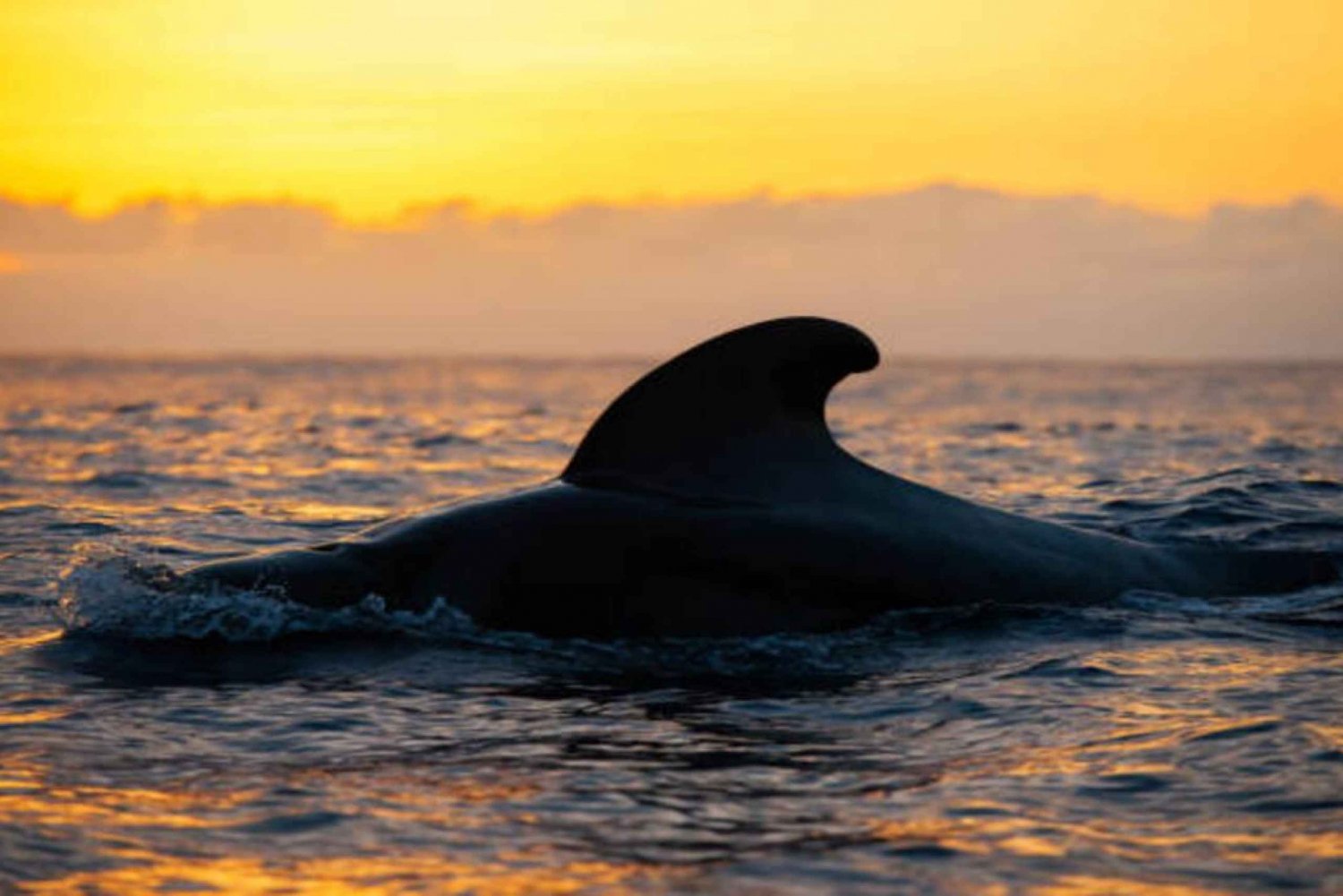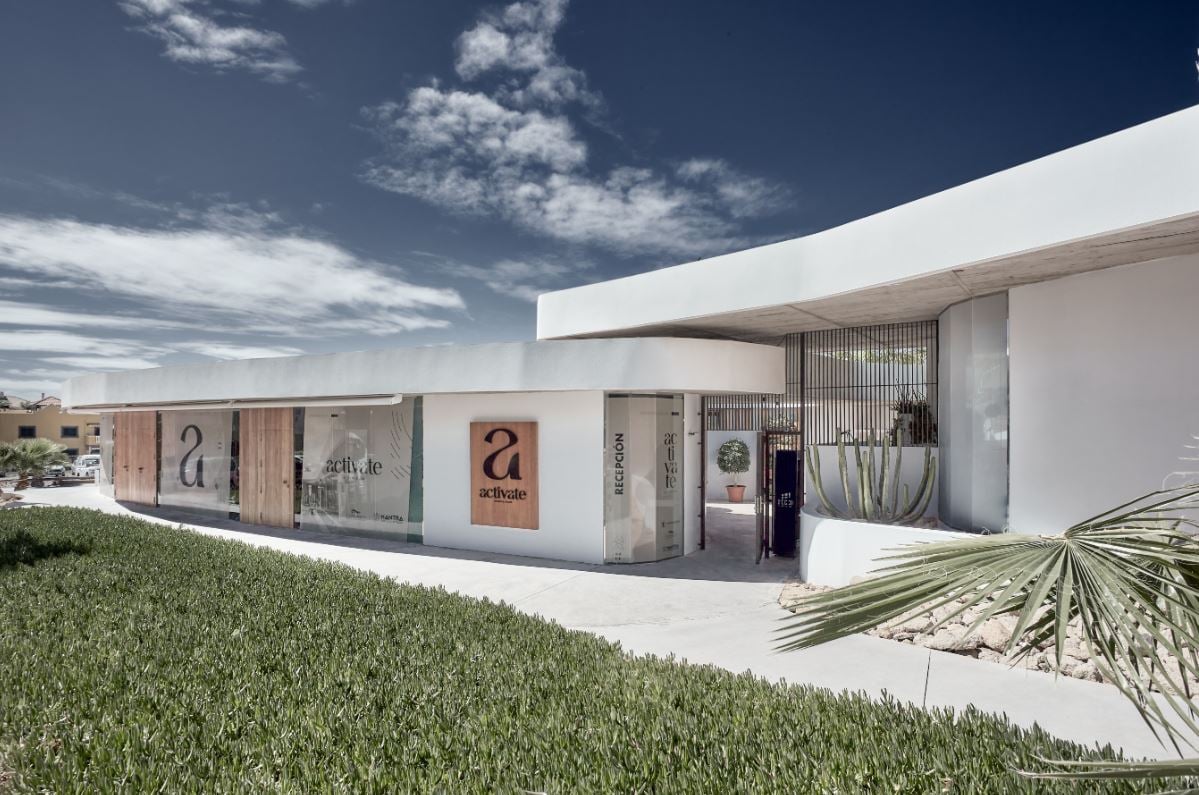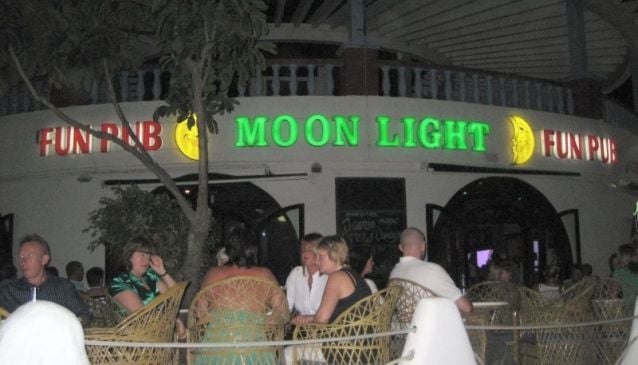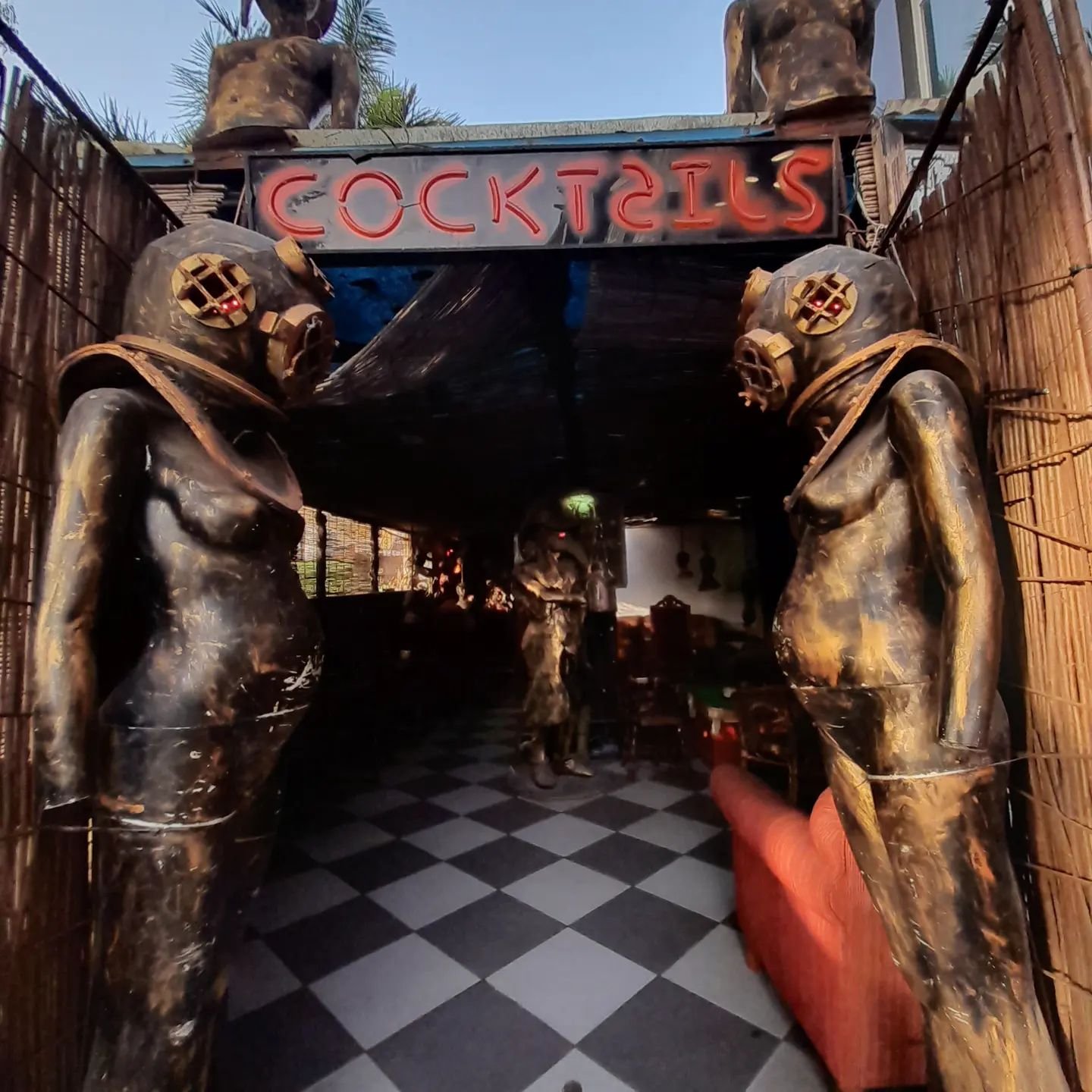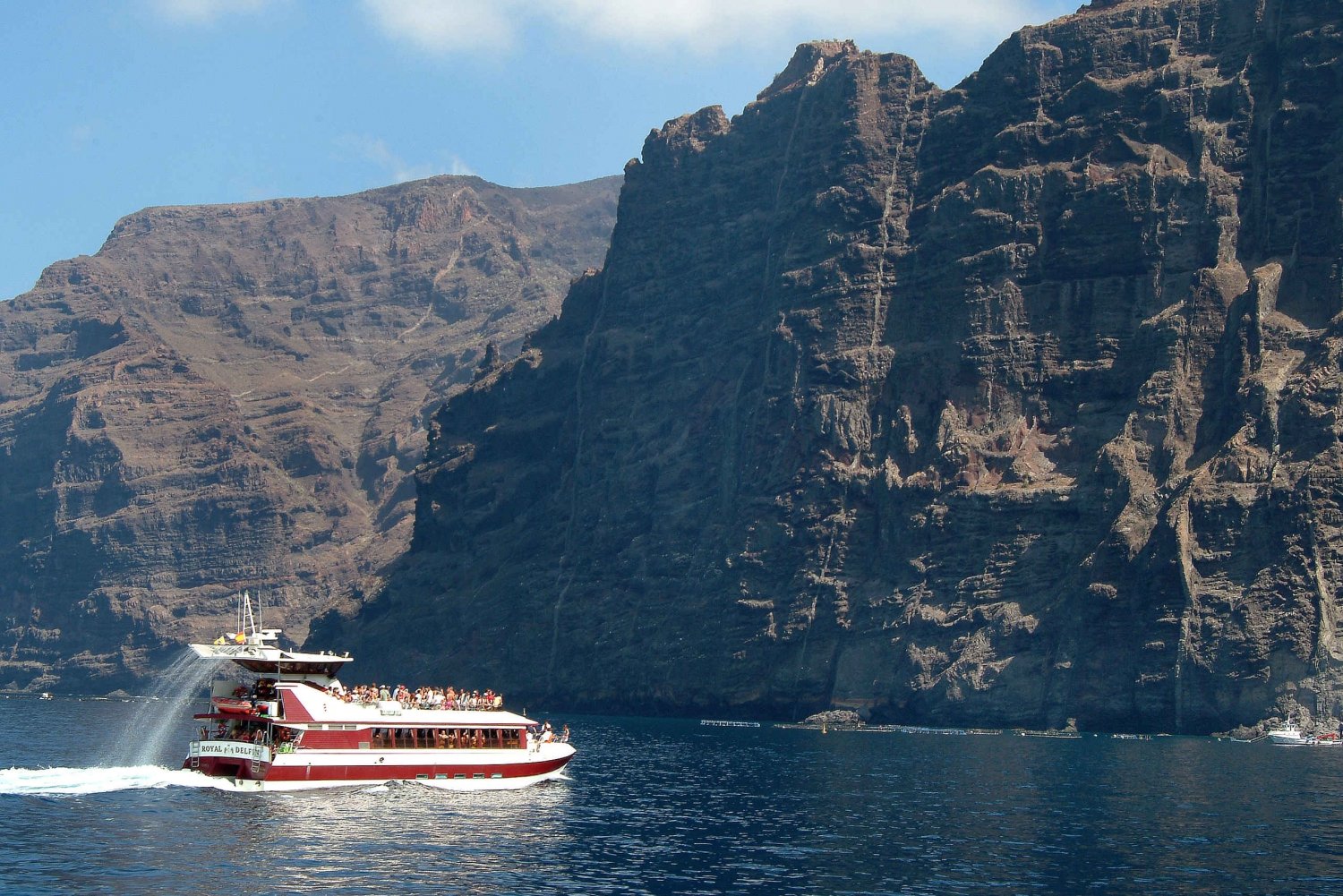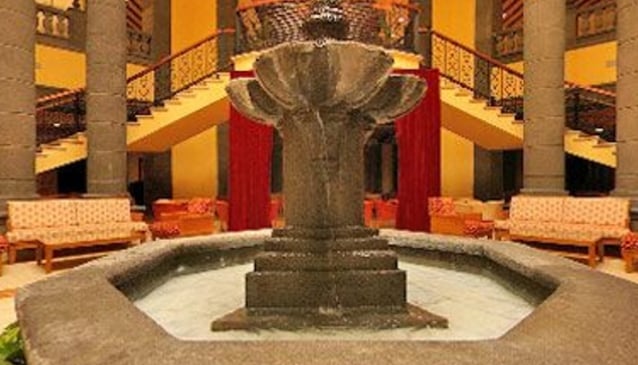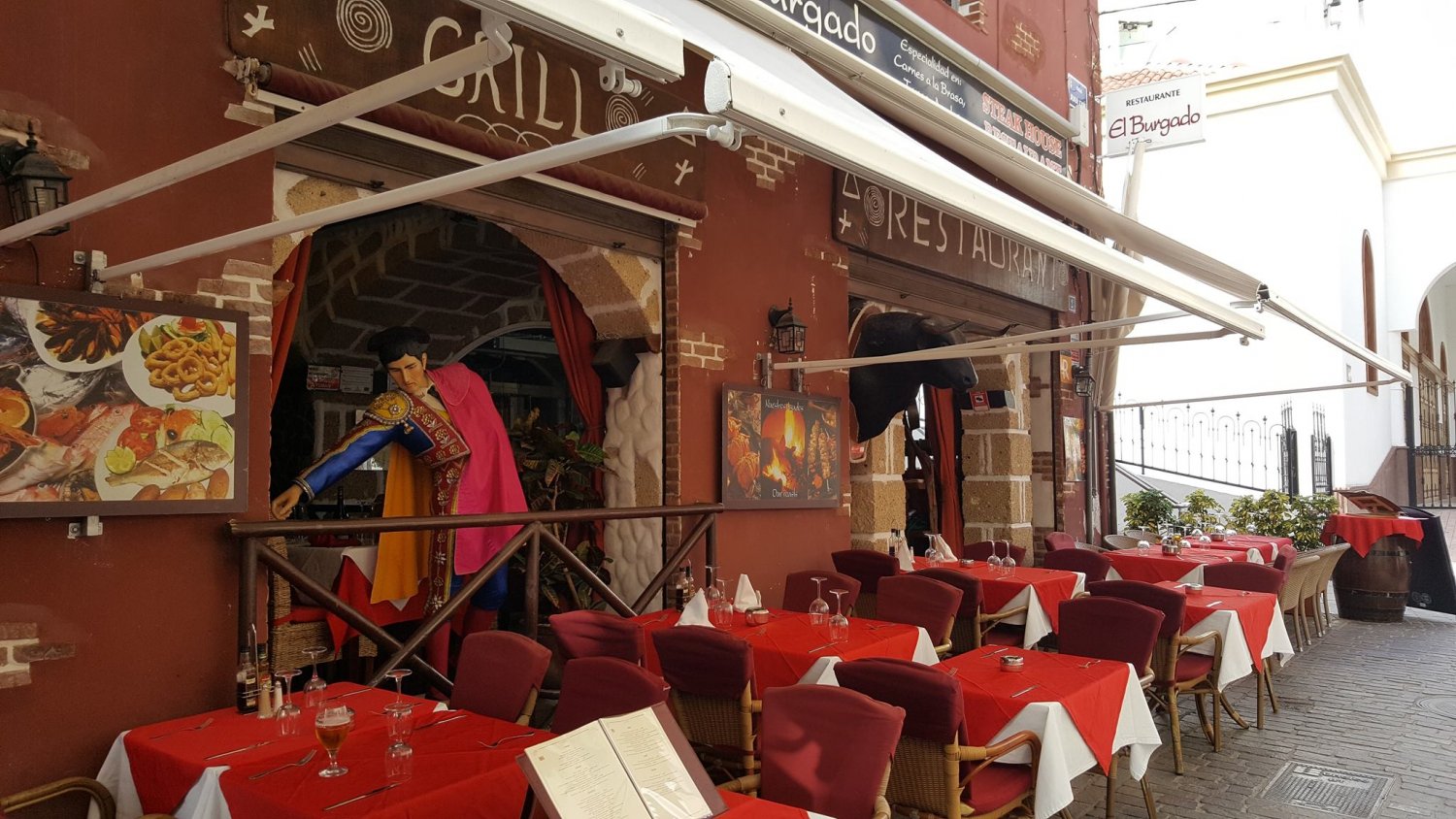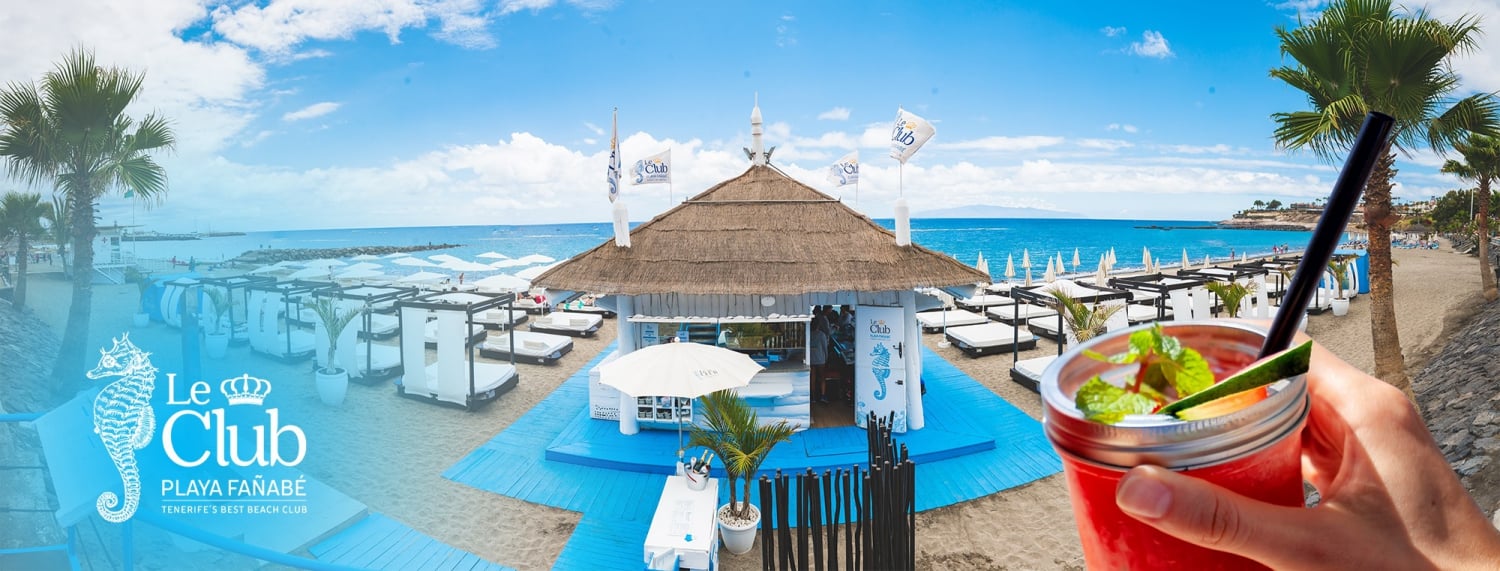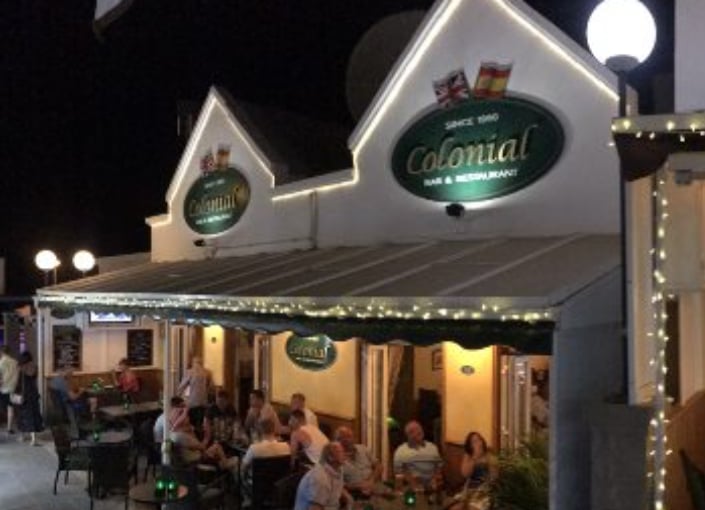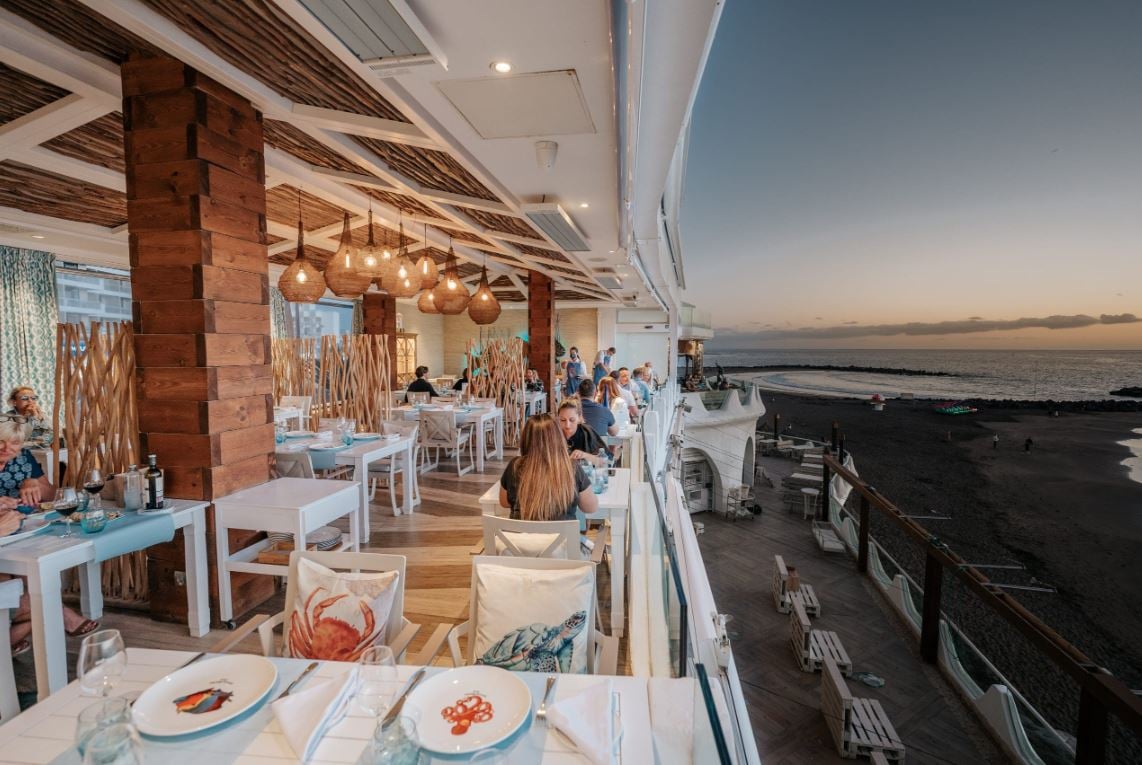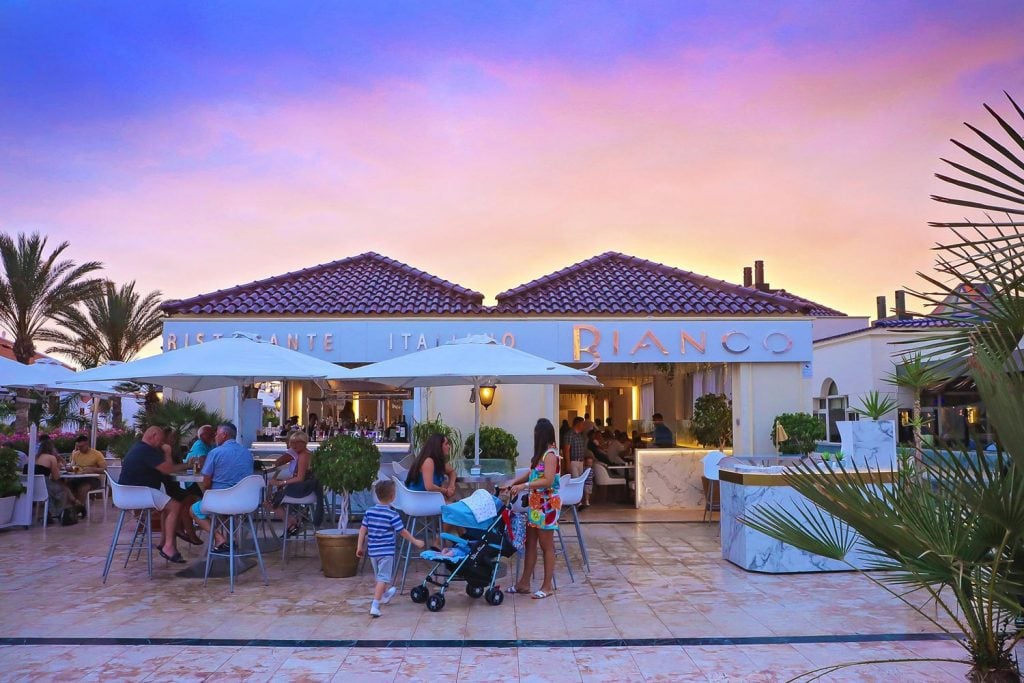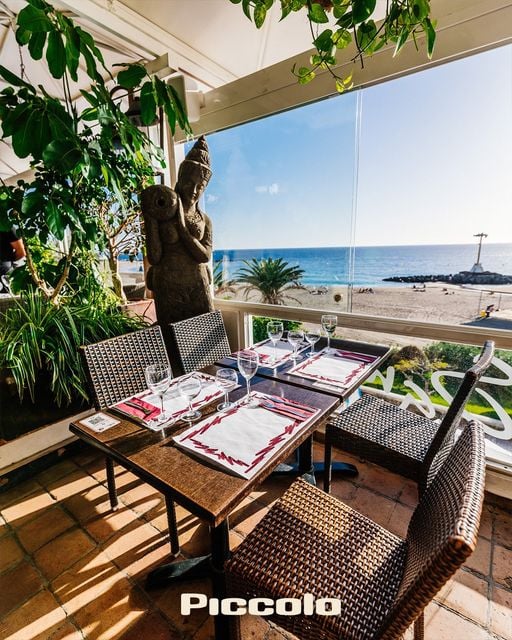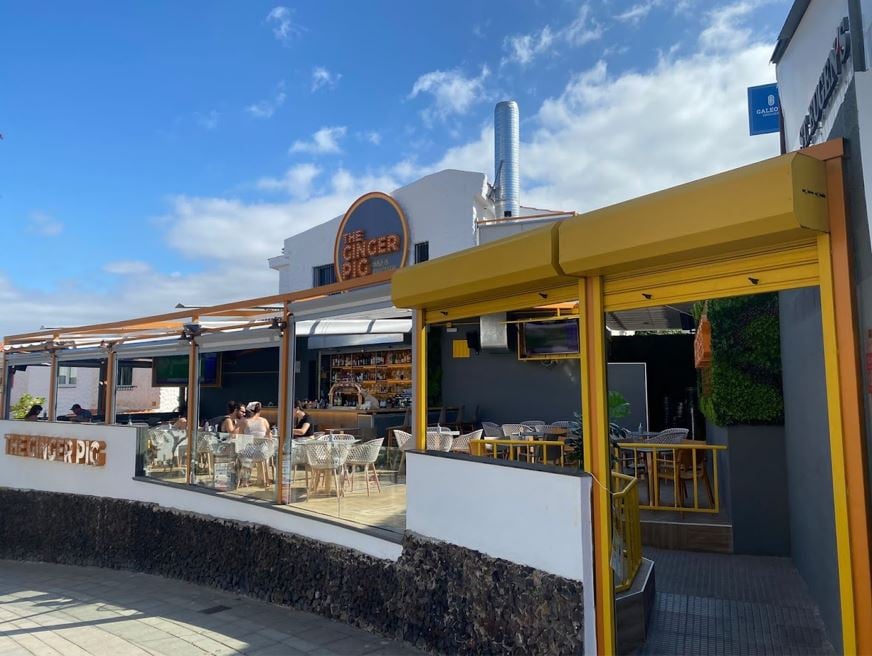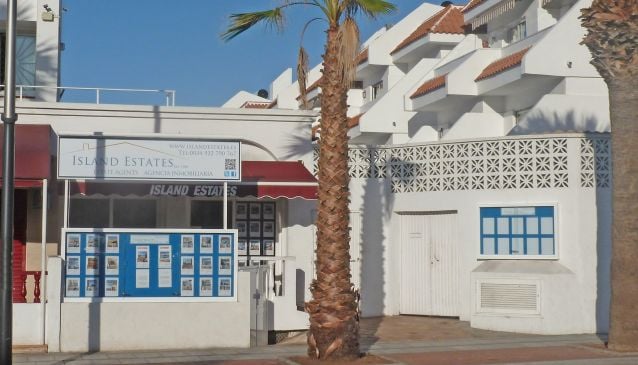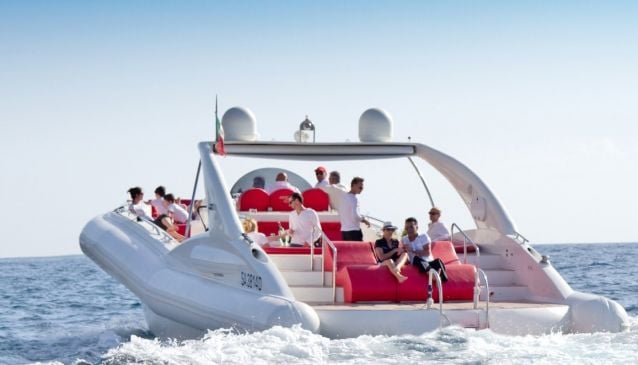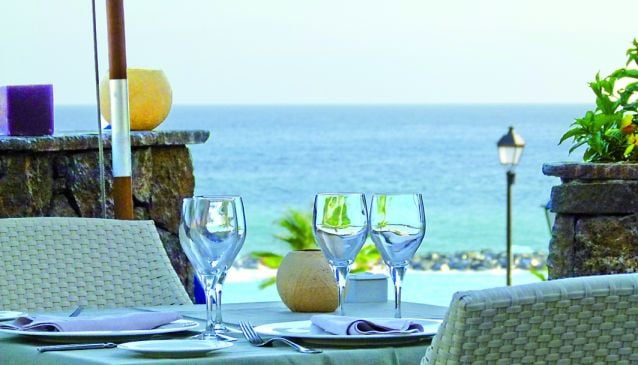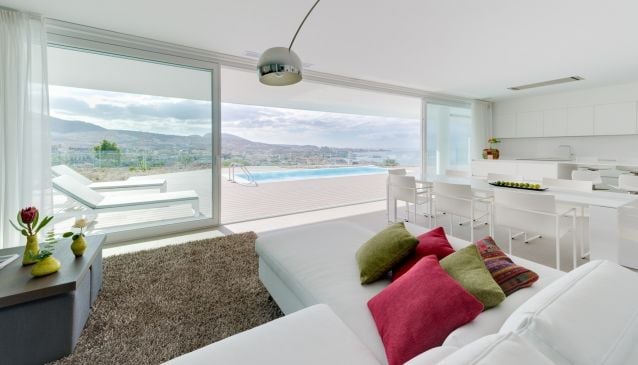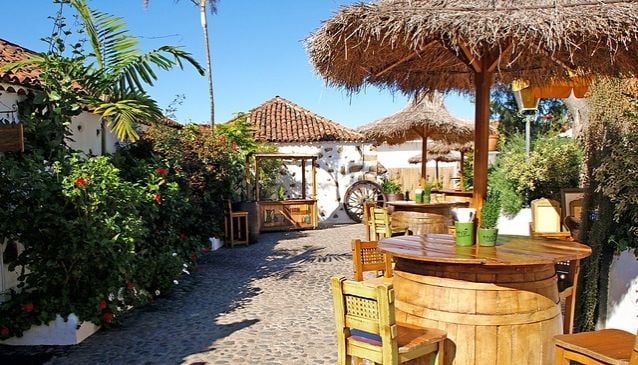Top Ten Tenerife
Tenerife's south-west coast is the largest breeding ground of the bottlenose dolphin in Europe...
Book Top Experiences and Tours in Tenerife:
If youʻre booking your trip to Tenerife last minute, we have you covered. Below are some of the top tours and experiences!- From Puerto de la Cruz: Teide and Masca VIP Tour
- La Gomera: Garajonay National Park Entry Ticket and Tour
- Puerto de la Cruz: Loro Parque Entry Ticket
- South Tenerife: San Cristóbal de La Laguna and Anaga Tour
- Costa Adeje: Whale & Dolphin Submarine Vision Mini Cruise
Scattered in the Atlantic, off the southwest coast of Africa, the Canary Islands have an appeal that extends way beyond their privileged latitude with the Sahara Desert. the largest of the Canaries, draws in 5 million tourists a year alone. A stark contrast to the mass emigration during the 19th and 20th centuries when the islands isolated location was a contributing factor in the exodus to the shores of Latin America.
Today, with two international airports on the island, isolation is no longer an issue. Geography instead is getting the recognition it duly deserves, as tourism to this volcanic European playground has regenerated the shores of an island that has snared many a visitor into extending their stay.
Here we look at just ten of the reasons to visit Tenerife, The Island of Eternal Spring.
Mount Teide
Standing at an impressive 3,718 metres tall Mount Teide is Spain's highest peak and the third tallest volcano in the world. Its burgeoning exterior sits comfortably in Teide National Park, a World Heritage Site since 2007, while the effects of its angry eruptions can be seen throughout the island. The park is a magnet for those who enjoy walking, and with its lunar-like landscape dramatic views come as standard. The park contains many types of flora and fauna, all specially adapted to deal with the high altitude and intense summer sunshine. Lava, not so much.
Currently dormant you can climb (or take a cable car) to 3,555 meters up and soak up the panoramic views of the island. Alternatively, you can go all the way to the top, though permits are needed as numbers to the summit are restricted to 200 per day. Important when you consider 2.8 million tourists come to Teide National Park every year.
Held every February in a blaze of colour, the Tenerife Carnival attracts thousands of visitors to the streets of its capital Santa Cruz, inflaming its usual population of 250,000. With parades, street parties and processions the festivities are open to all and fancy dress is obligatory. Each year the carnival has a different theme, although the penchant for men to dress as women never gets old.
Famed for being the second biggest carnival after Rio de Janeiro, this extravaganza of fun is a real highlight of any well-timed visit to the island. Be prepared to tap your feet, dance all night and make friends you're unlikely to recognise again come sunrise when the fishnets, frocks and fancy wigs go back into hiding for another year.
As an island it's unlikely to surprise anyone that seafood is a big player on many a menu in Tenerife. El Burgado, in Buenavista del Norte is one such restaurant that specialises in fish and fellow sea dwelling delights, with an idyllic setting right on the coast.
Papas Arrugadas are another staple loved by locals and tourists alike. Literally translated as wrinkly potatoes, these small spuds are boiled with a generous amount of Rock Salt before the water is drained off and they are heated again. Mojo sauce is a great accompaniment and is somewhat of an island delicacy. There are two variations to try: the red mojo based on hot red pepper, garlic and paprika and green mojo whose main components include coriander, garlic, cumin and green pepper.
Tenerife has 5 main wine producing areas that are certified for their quality. With a range of wines to sample visiting a local bodega is an ideal way to discover what you like. Bodega Monje in El Sauzal, Santa Cruz, is but one that opens its doors to visitors. Come and learn about the local wine production, art and music events or wine and sax evenings
It's no secret that Tenerife is blessed with good weather all-year round thanks to its enviable sub-tropical climate. Visiting in February (the islands deepest, darkest winter) the bikini and sunscreen still got an outing. What is perhaps not so well known about Tenerife however is the islands ability to shift its temperatures within the 2,000 or so square kilometres of its rugged surface area. To the north temperatures are cooler and jumpers are needed. Drive 45 minutes to the south and you can be lying on the beach at Los Cristianos in your speedos. Climb Mount Teide and you'll see snow. This micro-climate (of around 9 in total) means whatever you're after, cool climes for walking and exploring or blazing skies for all-out sun worshiping there is a high possibility you'll find it.
In total the island has around 100 volcanoes (many off-shots of Mount Teide) that have played a part in the formation of Tenerife's landscape. The evidence of these eruptions is visible on the exterior of Tenerife's crust today, but in order to understand the islands hot and fiery history it helps to go underground. Cueva del Viento, protected by conservation measures since 1998 is the longest network of underground caves in Europe (officially 17km, officially 18km as a further 1km has been discovered). The caves were made by lava flow during the eruption of Pico Viejo, resulting in lava tubes advancing towards the sea, (although it's not possible to walk all the way today as rocks have blocked the route). Visits to Cueva del Viento are only by guided tour, in groups of up to 16 people.
One of Tenerife's big attractions, alongside its year-round sunny skies is the island's beaches. With the best of the weather in the south of the island most of Tenerife's most popular beaches can be found on the Costa Adeje, Playa de las Americas, Los Cristianos and Los Gigantes. That's not to say however, that the north hasn't got its gems. Las Teresitas, found north of the island's capital Santa Cruz is a picturesque setting to spread your towel, with off shore breakwaters creating a calm fish-filled watery haven.
Tenerife's volcanic heritage has resulted in many beaches on the island boasting an exotic blanket of black sand. These beaches are most commonly found in the north of the island while the yellow sands generally seen elsewhere around the globe are in the favoured tourist resorts of the north. This sand is also pretty exotic, coming as it does from the Sahara to appease those who don't want their local sand au natural.
Tenerife's waters are home to a surprising array of marine life, from colourful fish to dolphins, turtles and no fewer than 21 species of whale. In fact Tenerife is the top place in Europe for seeing whales in the wild while the south-west coast of the island is the largest breeding ground of the bottlenose dolphin in Europe.
During my visit I was fortunate enough to join a trip out to swim with turtles, called a flyover, with The Ocean Dreams Factory. Their vision is to take people out to see these beautiful creatures and use the money to help marine conservation projects. Numbers are strictly limited so as not to destroy the turtle's habitat. Swimming up close with these graceful creatures they showed no fear and have clearly become accustomed to the human interaction. An interaction that is ensuring these amazing creatures stay part of Tenerife's charm for years to come.
Wander away from Tenerife's bustling capital and thriving tourist hotspots and you'll be rewarded with an array of pretty traditional towns and villages that beg to be wandered. Whether you steal a couple of hours away from the beach to mix with the locals or you take a whole day to soak up the atmosphere over a long lunch on a restaurant terrace.
Garachico is one such town that has a charm away from merely a long sandy beach. It's volcanic coastline and rock pools add a rustic appeal and the main square flanked by the town hall, church and courtyard-style houses oozes a laid-back assurance. Once the islands premier trading port it has its fair share of history to tell. A victim of landslides in 1645 and the eruption of Volcan Negro in 1706 it has certainly found nature to be a formidable force, but has come through the other end smiling.
Tenerife is one of the top places in the world to stargaze thanks to its latitude that enables onlookers to take in all the constellations of the northern hemisphere all-year round. With the government cracking down on light pollution it's possible to take in the night sky from various points on the island. One well-known and renowned observatory' is that found on the summit of Mount Teide (aptly named the Teide Observatory). However, some hotels, like Bahia del Duque have their own on-site observatories for guests to use, giving you a glimpse into one of the clearest skies in the world.



